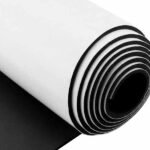Putting on a wet suit can be a real challenge. I remember my first time struggling to get into mine. It felt tight and uncomfortable, and I was worried it might tear. But once I learned the right techniques, it became much easier. In this guide, I’ll share with you the best ways to put on a wet suit, so you can enjoy your water activities without any hassle.
Putting on a wet suit correctly ensures you stay warm, flexible, and protected during your water adventures.
Imagine being ready for a day of surfing or diving, only to spend valuable time battling your wet suit. It can be frustrating and take away from the fun. But with the right approach, you can slip into your wet suit smoothly and get back to enjoying the water.
What Is a Wet Suit?
Understanding what a wet suit is helps you use it effectively.
A wet suit is a waterproof garment made of neoprene that keeps you warm by trapping a thin layer of water between the suit and your skin, which your body heats up. What is neoprene?
Types of Wet Suits
Fullsuits vs. Shorties
| Type | Coverage | Best For | |
|---|---|---|---|
| Fullsuits | Entire body | Cold water diving, surfing | |
| Shorties | Torso with short arms and legs | Warmer water activities | |
| Spring Suits | Full arms, short legs | Moderate temperatures | |
| Drysuits | Completely dry | Extremely cold conditions | What are the different types of wetsuits? |
Choosing the right type depends on your activity and the water temperature. For example, fullsuits offer maximum warmth for cold dives, while shorties are perfect for surfing in warmer waters. Knowing these types ensures you select the suit that best fits your needs.
Is There a Trick to Putting on a Wetsuit?
Many think there’s no easy way, but a few tricks can make it smoother.
Yes, warming the suit, using lubricants, and starting from the legs can make putting on a wetsuit much easier.
Effective Techniques for Easy Application
Warming the Neoprene
Warming your wet suit before wearing it makes the neoprene more flexible. This reduces the risk of tears and helps the suit stretch over your body more easily. You can hang it in a warm room or use a heat gun for a few minutes. How does a heat gun help with wetsuit flexibility?
Using Lubricants
Applying talcum powder or a specialized wetsuit lubricant minimizes friction. This allows the suit to glide on smoothly without sticking to your skin, making the process quicker and less painful.
These tricks not only save time but also extend the life of your wet suit by preventing unnecessary wear and tear.
Do You Wear Anything Under a Wetsuit?
Wearing layers under your wet suit can enhance warmth and comfort.
Yes, wearing thermal underwear made from moisture-wicking materials can provide extra insulation in colder waters, while avoiding cotton is essential to prevent heat loss.
Layering for Optimal Warmth
Choosing the Right Base Layers
| Material | Benefits | Drawbacks |
|---|---|---|
| Synthetic fabrics | Moisture-wicking, quick-drying | May lack some warmth |
| Wool | Excellent insulation, breathable | Heavier |
| Avoid Cotton | Retains water, causes heat loss | Not suitable for wet suits |
Selecting the appropriate base layer is crucial. Synthetic fabrics and wool are great choices as they keep you dry and warm. Cotton should be avoided because it retains water, leading to rapid heat loss and discomfort.
How to Wear a Wetsuit for Beginners?
For newcomers, wearing a wet suit can seem intimidating. Here’s how to make it easier.
Start by preparing your wet suit, using lubricants, and following a step-by-step method to ensure a comfortable and secure fit.
Step-by-Step Tips for Beginners
Step 1: Preparation
- Inspect the Suit: Check for any tears or defects before wearing.
- Warm the Suit: Make it pliable by warming it slightly.
Step 2: Applying Lubricant
- Use Talcum Powder: Lightly dust the suit to reduce friction.
Step 3: Putting on the Legs
- One Foot at a Time: Insert your feet carefully and pull the suit up your legs.
These steps help beginners navigate the initial challenges, making the experience less frustrating and more enjoyable.
Do You Wet a Wetsuit Before Putting It On?
Pre-wetting your wet suit can make the wearing process easier and more comfortable.
Yes, soaking your wet suit in fresh water before wearing it helps to soften the neoprene, reducing stretching and making it easier to put on.
Benefits of Pre-Wetting
Reduces Stretching and Tears
Pre-wetting the suit decreases the neoprene’s elasticity, minimizing the risk of tearing when you put it on.
Enhances Comfort
A wet suit that is already moist conforms better to your body, reducing discomfort and improving mobility.
Pre-wetting not only protects your investment but also ensures a better fit and greater comfort during use.
How Do You Prepare to Put on a Wet Suit?
Proper preparation is key to successfully wearing a wet suit without damage or discomfort.
Preparing involves drying your skin, warming the suit, and ensuring the zipper is functional to facilitate an easy wearing process.
Comprehensive Preparation Steps
Skin and Suit Preparation
- Dry Your Skin: Ensure no moisture is on your skin to prevent irritation.
- Avoid Lotions: Lotions can degrade the neoprene material.
Environmental Preparation
- Warm Area: Put on your suit in a warm, dry place to make the neoprene more flexible.
- Assistance: Having someone help you can prevent damage and make the process smoother.
By taking these preparation steps, you ensure that putting on your wet suit is as seamless and effective as possible.
How Do You Properly Put on a Wet Suit? Step-by-Step Guide
Following a structured approach can make putting on a wet suit straightforward and efficient.
A step-by-step method ensures you don’t miss any critical steps, leading to a comfortable and secure fit.
Detailed Step-by-Step Process
Step 1: Prepare the Suit and Environment
- Warm the Suit: Ensure the neoprene is flexible.
- Apply Lubricant: Lightly dust with talcum powder.
Step 2: Start with the Legs
- Insert One Foot at a Time: Carefully slide each foot into the suit.
- Pull Up the Legs: Gently pull the suit up to your thighs and hips.
Step 3: Pull Up the Torso
- Lean Forward Slightly: This helps the suit slide up smoothly.
- Smooth Out Wrinkles: Ensure the suit fits snugly without bunches.
Step 4: Insert the Arms
- One Arm at a Time: Carefully insert each arm into the sleeves.
- Adjust Shoulders and Sleeves: Make sure everything is aligned properly.
Step 5: Secure the Zipper
- Align the Zipper: Start from the bottom and work your way up.
- Seal Properly: Ensure the zipper is watertight.
Step 6: Final Adjustments
- Check the Fit: Move around to ensure comfort and flexibility.
- Inspect Seals and Seams: Make sure all areas are secure.
Following these detailed steps helps you put on your wet suit correctly, ensuring maximum comfort and performance.
Conclusion
Mastering how to put on a wet suit can transform your water activities, making them more enjoyable and efficient. From understanding what a wet suit is to following a detailed step-by-step guide, each aspect plays a crucial role in your overall experience. At Szoneier, we specialize in creating high-quality, custom-made wet suits and other neoprene products tailored to your specific needs. With over 20 advanced production lines, we ensure durability, fine texture, and exceptional performance in every product we deliver. Our flexible customization options, low MOQ, and commitment to quality make us the perfect partner for brand owners, wholesalers, and retailers in Europe, North America, and Australia. Ready to elevate your wet suit offerings? Contact me, Eric, at info@neoprene-bag.com or visit our website www.neoprene-bag.com to request a quote and start a successful collaboration today.











